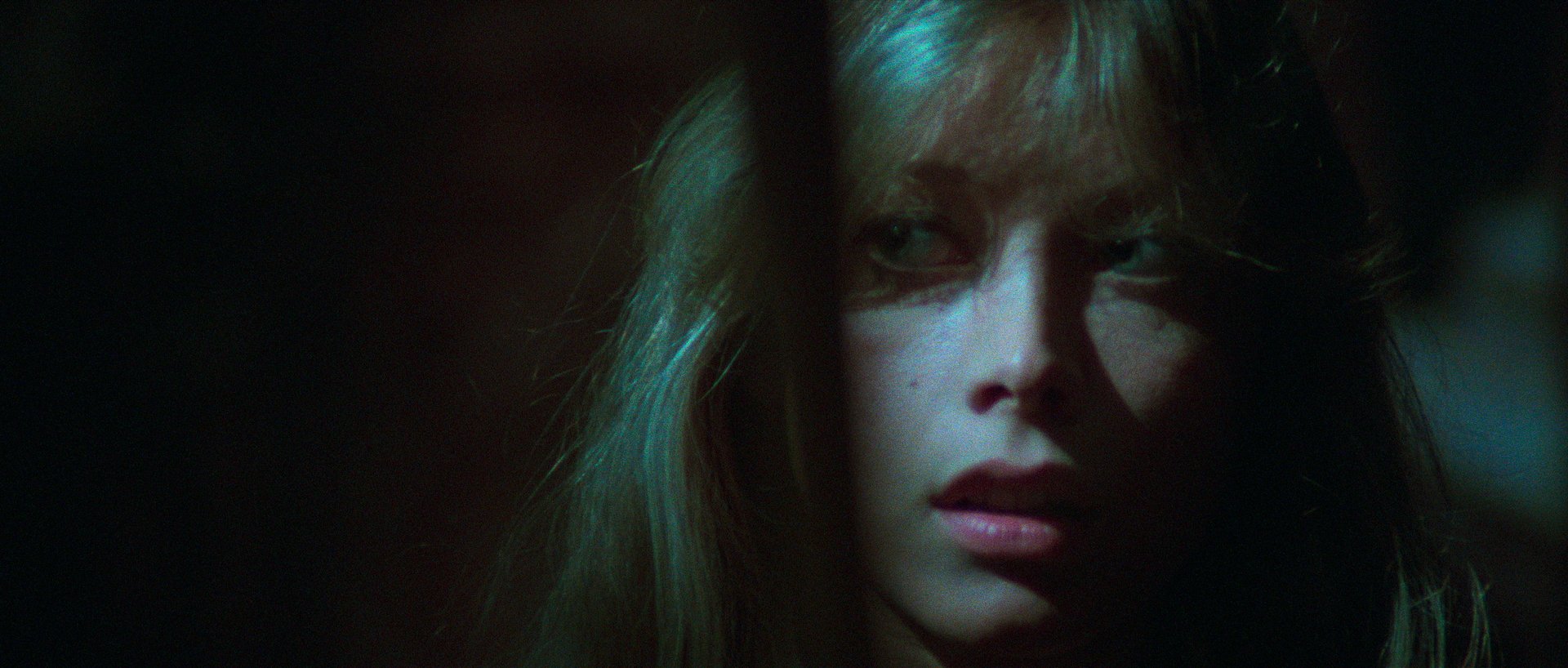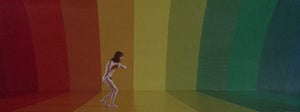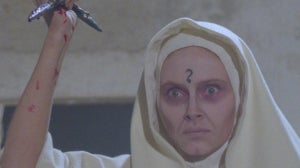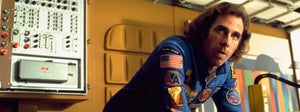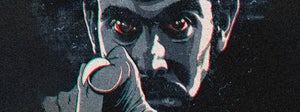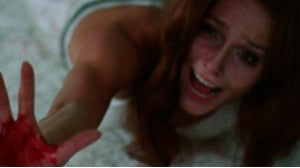
Skeletons fall out of cupboards/Curtains drawn fall open to allow
The light shows up the dust/That plays around your face
The Bolshoi “A Way”
Every home holds a secret. No matter if it’s a castle, shack, log cabin, cramped studio apartment, high-rise condo, or an old gothic Victorian-style house in a small, New England town. The past can feel tangible, like a thumbprint left on a glass pane or a rust-colored stain that never quite washes out no matter how hard one scrubs. No wonder the trope of the old dark house or its more regal parent, the familial castle, is one that has persevered through decades of horror literature and cinema. From Nathaniel Hawthorne’s 1851 novel The House of Seven Gables to James Whale’s pre-code horror gem, The Old Dark House (1932), the concept is both comfortably familiar and rich with such queasy potential.
So, imagine what kind of sins and shadows a home can hold in the hands of a filmmaking master like Lucio Fulci, especially when it is part of his “Gates of Hell” trilogy in the form of 1981’s The House by the Cemetery. Set and shot in Massachusetts, we see the beauty of small-town New England become transformed into something claustrophobic through the eyes of a director like Fulci. Even when characters are outside, the streets look more narrow and even the woods surrounding the titular house feel cramped.
A married couple, Norman (Paolo Malco) and Lucy (Catriona MacColl) Boyle, along with their young son, Bob (Giovanni Fresca), go to stay in a gorgeous, old house in Massachusetts. An associate of Norman’s, Peterson, who had stayed in that same remote structure, hung himself after murdering his mistress, leaving behind unfinished research as well as a grim mystery. Uprooting his family from their cozy-looking New York City apartment to this huge but semi-abandoned house in rural Scituate, Norman tries to pick up where Peterson had left off.
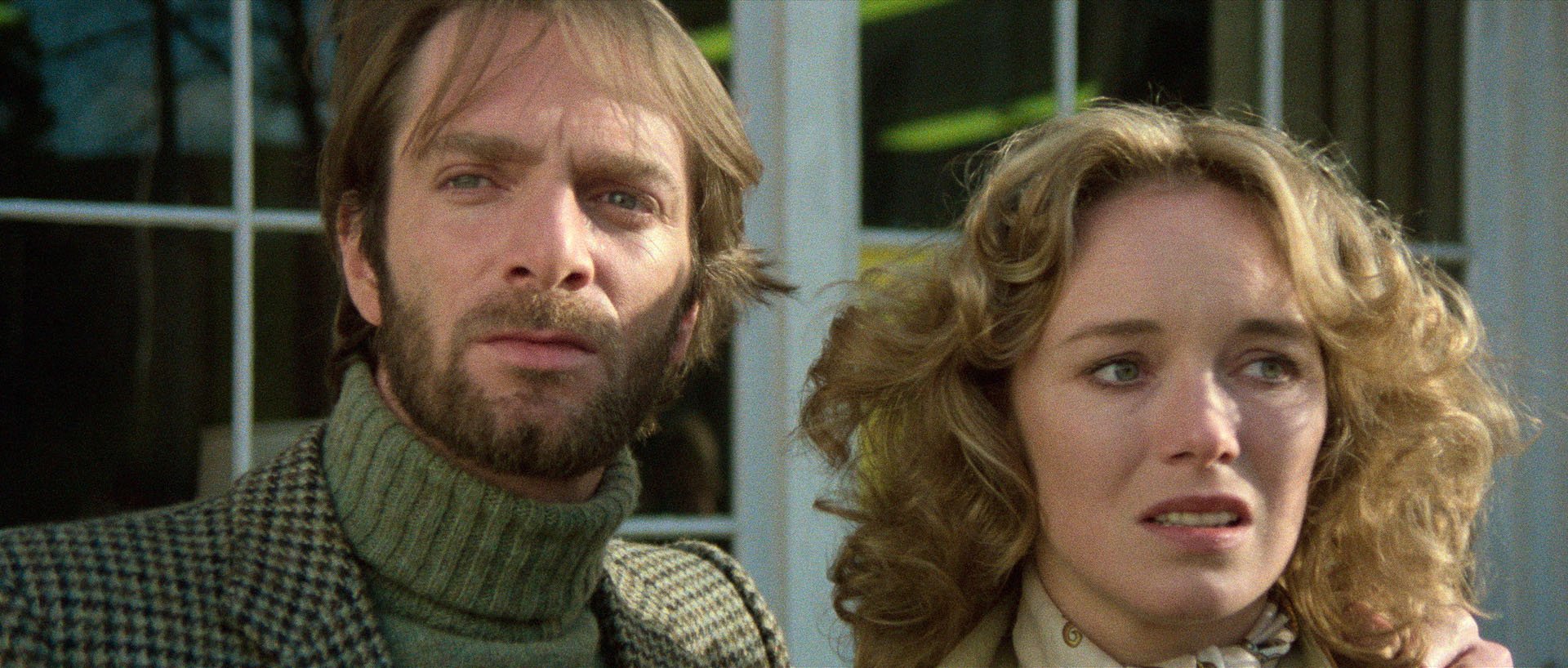
The high-weirdness begins to ring before the Boyles have even left, with Bob having a telepathic connection to Mae (Silvia Collatina), a little girl that he can see and hear via a large black and white photo of the house. When the Boyles arrive at the house…THAT house…, even Lucy points out that it looks exactly like the one in the photo back in New York. Norman immediately dismisses her, even though anyone with a working set of eyes and a sliver of functional memory retention can see the resemblance is beyond uncanny.
Speaking of the uncanny, the way the film gives us certain details while keeping others so close to its chest that they never will be revealed is fascinating. Many a writer, reviewer, and hardcore horror fan has talked or complained about the plots in a lot of Italian horror cinema, especially when it comes to Fulci’s bigger titles, not always making a ton of sense. The House by the Cemetery is one of those Fulci films that gets brought up in such discussion, but to nitpick like that derails one from seeing the bigger part of what makes this film creep so well.
For example, early on, when the Boyles are talking with Ms. Gittleson (Dagmar Lassander), a local realtor about where they will be staying, she makes a remark to Norman about this being his second time in the area. He immediately corrects her, saying that this is his first trip. Later on in the film, a gentleman at a library basically says the same thing to Norman and is met with the same response he gave to Gittleson. The brilliance of this detail is two-fold. Early on, between Norman’s dismissiveness of Nancy, the way he tries to encourage her to take prescription pills that she is obviously not comfortable with, and then Gittleson’s comment, the vibe that he could be a or maybe even THE villain of the piece is there.
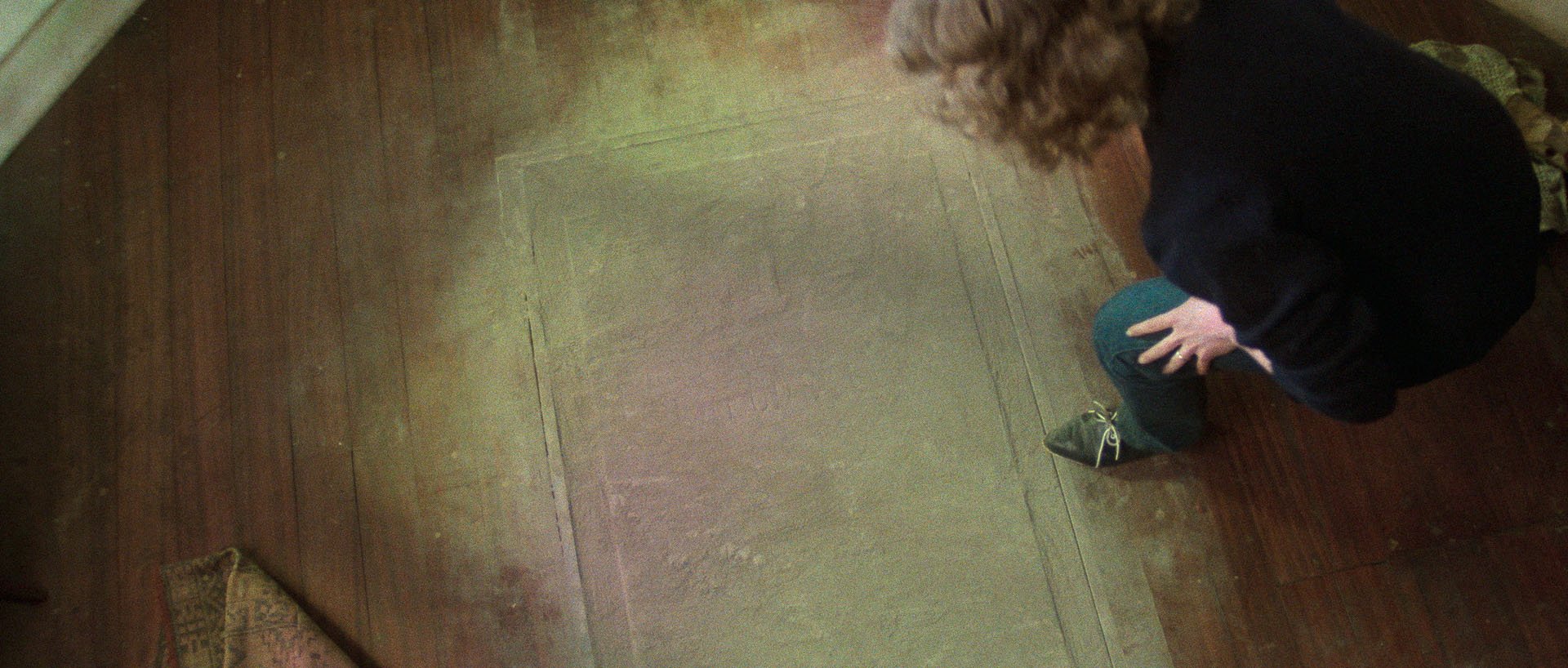
Luckily, this is Lucio Fulci we’re talking about, where the only obviousness that can assuredly bear fruit is the meaty, crimson-colored kind. By the time we get to the second time of mistaken identity with Norman, it is clear that he is, more than likely, telling the truth about this being his first visit to the town. What can it all mean? Was there a doppelgänger of Norman that visited Peterson when he was still alive? Is the fabric between the world of day-to-day reality and the living so much more filmier and threadbare than one would like to think?
The best part is that by the end of the film, we still don’t know the situation about Norman nor do we ever really find out the backstory of Ann (Ania Pieroni), the striking and strikingly weird babysitter sent to the Boyles by Gittleson. It’s all the best parts because we are in the hands of a great director. If this was some low-energy, empty-hearted flunkie, then it would come across as incomplete and even lazy. Something that is key about Fulci’s talent is that in so many of his horror films, he innately knows that the worst thing a director can do is baby the audience. (Granted, it sure doesn’t stop one from reading or hearing circular debates in the community, but that’s for another time and place.)
We are in the realm of the fantastique here, where not only is it okay to color outside the lines but also, wait, there are lines???
Tied to that, though, is a huge truth. In “real” life, when do we ever have all the answers, especially when concerning the past or certainly each other? To get even deeper, obtaining knowledge about anything beyond our tiny sphere of daily existence is a crapshoot. Fulci gives us enough details and tapestries to make what we do know truly unsettling.
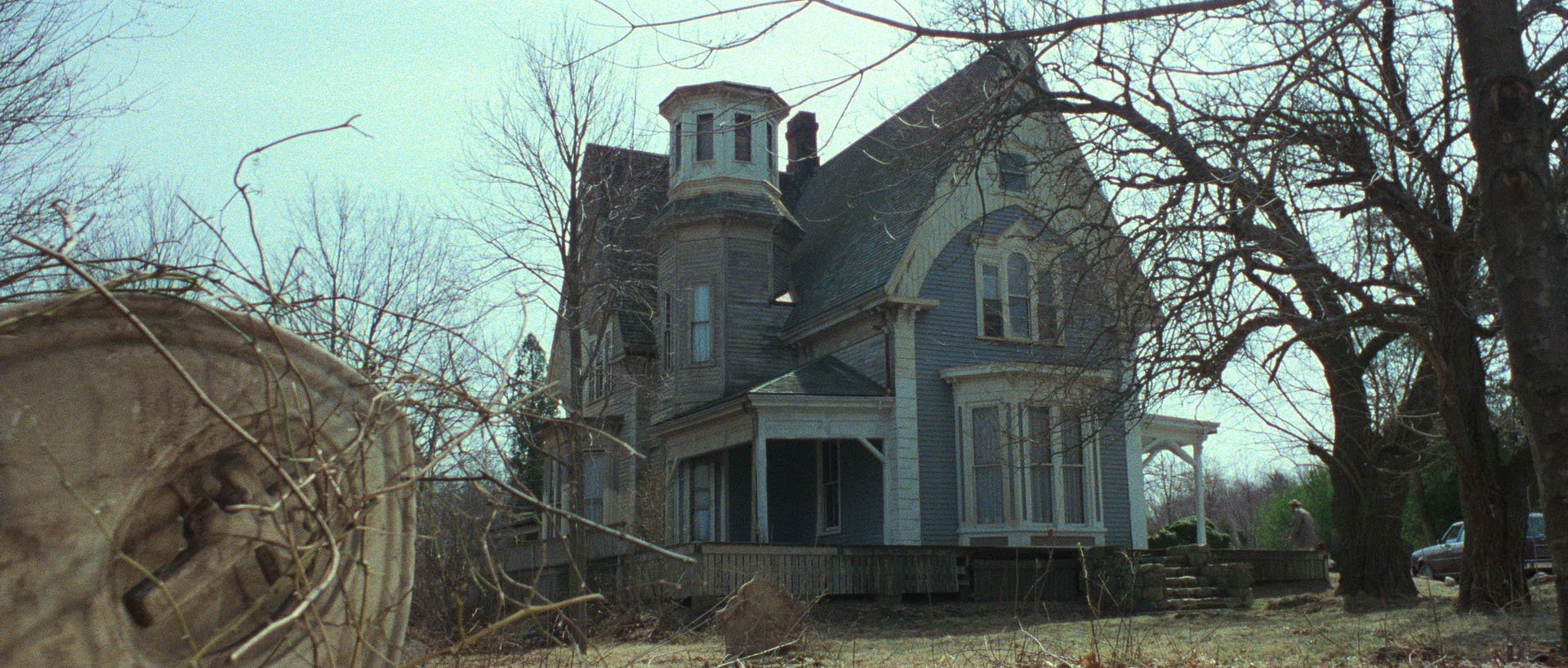
Which all takes us back to the house itself. Each decayed petal falls off the bloom, sharing a secret that is alternately horrifying and sad. One of the most beautifully executed scenes in the whole film is when Norman finds a cassette tape labeled “Peterson Personal.” As Norman listens to the voice of his now long-demised coworker, the tableau painted of what Peterson discovered, via a mix of visuals and voiceover, is truly disturbing. It’s mutilation without discrimination, regardless of age or gender. (Thank god, the dubbed actor in the English version is quite good.) In Peterson’s recording, he talks about the inescapable smell of blood, which is such a hauntingly perfect detail. It’s one thing to show spilled blood, which obviously, we do see a lot throughout, but to mix the grue with another of our senses is so effective. Knowing that not only a structure of aged beauty holds such gnarled secrets, but the place where you and your family have been staying is a slaughterhouse with little rhyme, reason, or end, takes the creep factor to a whole new level.
Equally striking and arguably even more distressing is the situation around sweet Mae, who continually tries to save Bob and his family from the dark secrets of the house. This ghostly young girl, who herself is plagued with grim visions of a future damned to loop the sins of the past, is so likeable and heartbreaking. Casting children in horror effectively is one of the toughest gambles, putting your film at risk of possessing the dreaded “Kenny” factor. (Gamera fans, you will know this plague too well.) Thankfully, there are no Kenny tones in The House by the Cemetery, with both Collatina and Frezza possessing a solid presence and verve. That is despite the best effort of Frezza receiving some very dodgy English dubbing. Even that doesn’t ultimately mar his performance or the film as a whole.
When the climax of the film reveals Mae’s ties to not only the House but to the original owner and source of evil, Dr. Freudstein, it is so heart-heavy and expertly revealed.
Like the other films in the Gates of the Hell trilogy, City of the Living Dead (1980) and The Beyond (1981), The House by the Cemetery was filmed in the United States but with a largely Italian cast that was dubbed. (Speaking of dubbing.) But other than the aforementioned problem with Bob, it is well done and actually helps lend a feel of otherness to the whole film with nothing being what it initially seems. Another factor that, albeit very loosely, ties the three titles together is taking place in a universe where if there is the existence of a god, its utter lack of benevolence towards a realm they have created is the scariest thing of all. The innocent suffer as much if not more than the guilty and the glittering rock that is hope was obliterated before the first frame even rolls.
https://www.youtube.com/watch?v=zE-89Gr7Pio

Related Articles

